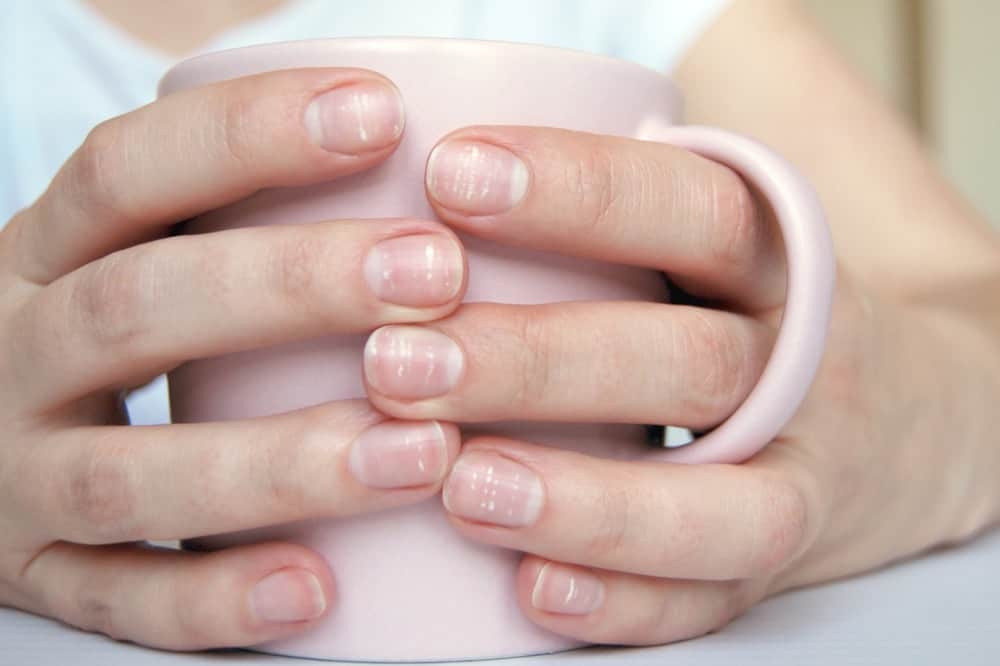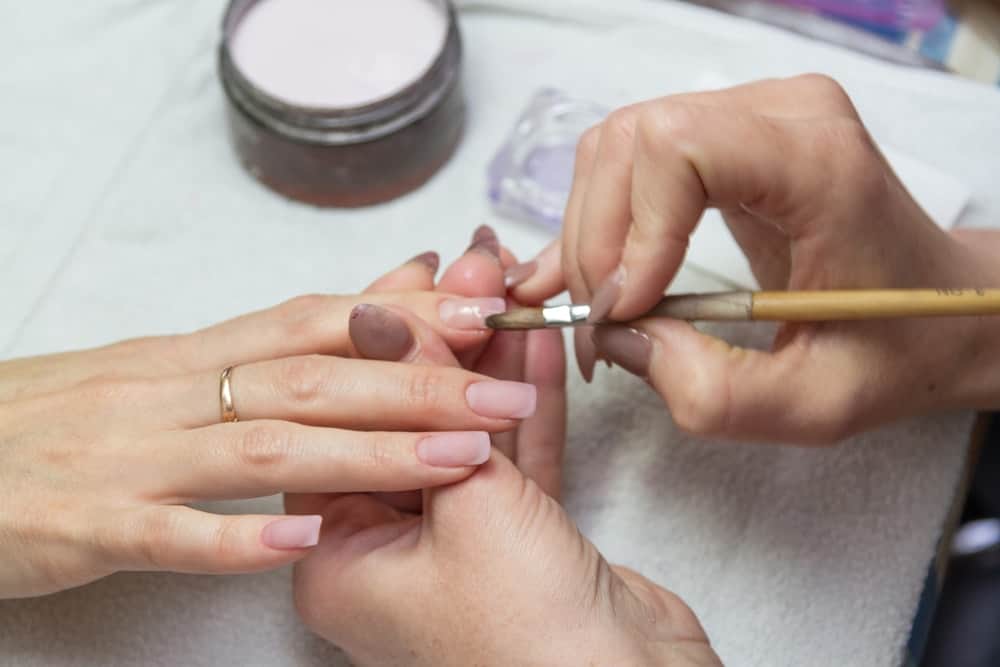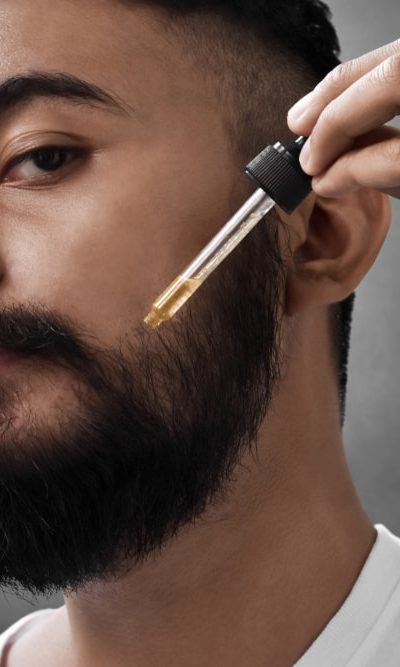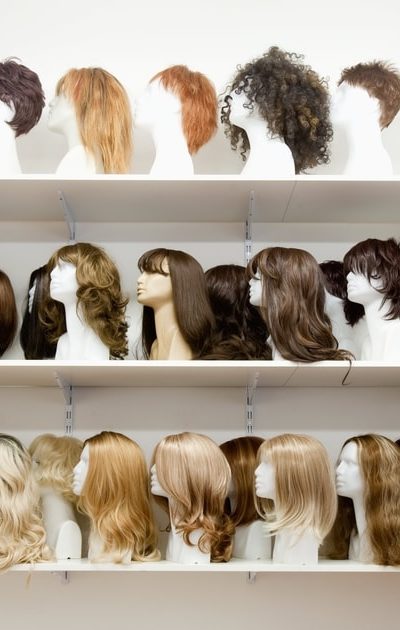
We see our hands every day – for many of us, they’re the part of our body we’re most familiar with. This means it’s easy to notice when anything changes! Nearly all of us have experienced white spots on our fingernails from time to time without understanding where it came from.
White spots on our fingernails can be startling or concerning, especially when they appear without a clear cause. Many people worry about whether these white spots signal a deeper issue with the health of our hands, or even our bodies overall.
This bodily phenomenon is actually quite common and rarely poses a risk to your health. There’s very little need to worry when you notice white in your fingernails, though it may seem strange. However, if you don’t like the way they look, there are options for covering or reducing white spots in your fingernails.
If you’re wondering what causes white to appear in your fingernails, don’t worry! We’re here to help.
Damage To The Nail Bed
One of the most common causes of white marks on fingernails is damage to the nail while it was forming inside a part of your finger called the nail bed.
Any trauma to the developing nail can create an air bubble or separation between the layers of the fingernail, which will turn into a white spot as it grows out.
This can happen due to an injury, like bumping your hand against something, or it can be the result of chronic nail tapping. Even picking too hard at your cuticles can cause damage in the nail bed that then becomes white spots on your nails!
And it’s not just you – sometimes nail technicians can accidentally damage your nails while they are working on your hands. It’s okay to ask someone to use less pressure, or even to visit a different salon if you’ve had your nail beds damaged during a professional manicure.
If you only have a white spot on one of your fingernails, it’s probably the result of this kind of impact or injury. To prevent this from happening in the future, be gentle with your nail beds, and avoid any habitual picking or tapping. But know that accidents do happen, and if you do get a white spot on your nail due to an injury, the best thing to do is wait for it to grow out.

Product Damage To The Nail
White spots can be the result of weakening, tearing, or damaged nails after a product has been applied. Using acrylic or gel nails, especially at home, can create this kind of damage to your nails and leave behind visible white spots. Incorrectly removing false nails or nail polish can also lead to the development of white streaks on your nails.
To avoid this type of damage to your nail, always follow the instructions on the package of whatever product you are using.

Never pick, pull, or chip off nail polish or acrylic nails. Try using a more gentle nail polish remover without acetone. Don’t scrub too roughly – if the polish won’t come off, be patient! Soak your nails in the remover before wiping it off with a soft pad or cotton ball.
White spots on your fingernails can also happen if your body has an allergic reaction to a nail or hand care product. If you started using something new around the time you started noticing white marks on your nails, try taking a break from that product and checking the ingredient list to see whether you may be having an allergic reaction to it.
If you’ve done a lot of at-home nail treatments that have damaged your nails and caused white spots, see a professional nail technician for advice and some salon treatments. Or, consider giving your nails a break to breathe and heal by going a few weeks without wearing polish or false nails.
Fungal Infection
A fungal infection called Onychomycosis, also known as Tinea Unguium, can cause white streaks, spots, or flakes on fingernails and toenails. There are a number of other fungal infections that can also affect your nails with this type of visually noticeable spot, like ringworm or candida.
You’re more likely to end up with white spots on your fingernails caused by a fungus if you have diabetes or any other kind of disease that impacts your blood circulation. People over the age of 65 are also at higher risk for this type of fungal infection.
Even if you’re not in one of those risk categories, you can also get a nail fungus from wearing artificial nails, swimming in a public pool, or doing anything that keeps your hands moist for an extended period of time. Fungal infections can also be spread at nail salons through poorly sanitized tools.
To prevent white spots from fungal infections, take good care of your overall immune health and the skin health of your hands and cuticles.
Wash your hands regularly and try to keep them dry even in moist environments. Consider wearing rubber gloves. If you visit nail salons, ask about their sanitation procedures and policies.
If you’ve already gotten a fungal infection that is causing white spots on your fingernails, the best way to treat it is to visit a doctor or dermatologist who can prescribe an antifungal treatment. There are also over the counter remedies, but they are not always effective in treating nail fungi.
Mineral and Vitamin Deficiencies

Although this is often the first thing many people think of when they see white spots on their fingernails, it’s not the most common cause. However, if you’ve already ruled out damage to the nail bed, damage from nail products, and the presence of a nail fungus, your white spots may be caused by a dietary deficiency.
The two most common deficiencies that can cause white spots on fingernails are calcium and zinc. People with restricted or limited diets, such as veganism and ketogenic diets are at higher risk for this type of deficiency. Eating disorders, such as orthorexia, bulimia, or anorexia, can also cause damage to the nails as a result of an inadequate diet.
If you are worried about a mineral or vitamin deficiency that affects your nails, you can try a dietary supplement like a multivitamin. You can also try a supplement specifically for nail and hair health.
The best way to get all your nutrients is a well-rounded diet full of fruits and vegetables and other natural foods. Speaking to a dietitian can help you identify and understand gaps in your diets and address them in a healthy and holistic way.
Disease
White spots on fingernails can also be a side effect or symptom of a disease that affects the entire body. Things like heart disease, kidney failure, and pneumonia have been known to create white lines or spots on fingernails.
Chemotherapy, a treatment for cancer that can cause damage to fast-growing parts of the body like hair and fingernails, also causes white spots on your fingernails.
If you’re dealing with a disease that is impacting your fingernails, it can be frustrating and confusing to see white spots appearing. However, there is little risk to your health from the white spots themselves, and they don’t need to be addressed as a problem.
Focus instead on your overall health and caring for your body, and take care of your hands and nails as they grow and heal.
If the white spots on your fingernails are bothering you during a difficult time, try speaking with your doctor about this concern. Treating yourself to a gentle manicure can cover these spots and reduce one area of stress as well.
Preventing White Spots

The best thing you can do to prevent white spots in your fingernails is to care for your hand and nail health by using gentle products and not picking or damaging your nails and nail beds.
If you visit a nail salon, make sure you trust and understand their sanitation policies, and that your nail technician is not being too rough with your cuticles and nail beds. If you swim in public pools, use shared saunas, or do work with your hands that exposes them to ongoing moisture, make sure to keep them as clean and dry as possible.
You can also care for your overall health by getting enough sleep, moving your body, and eating a balanced diet with enough foods and lots of fruits and vegetables.
Even if you have excellent hand care and a healthy diet, you still may get white spots in your nails from time to time. Try not to worry – they’re harmless, and they will eventually disappear as your nail continues to grow. Don’t try to remove or buff out the spots, as that will weaken your nail even more.



